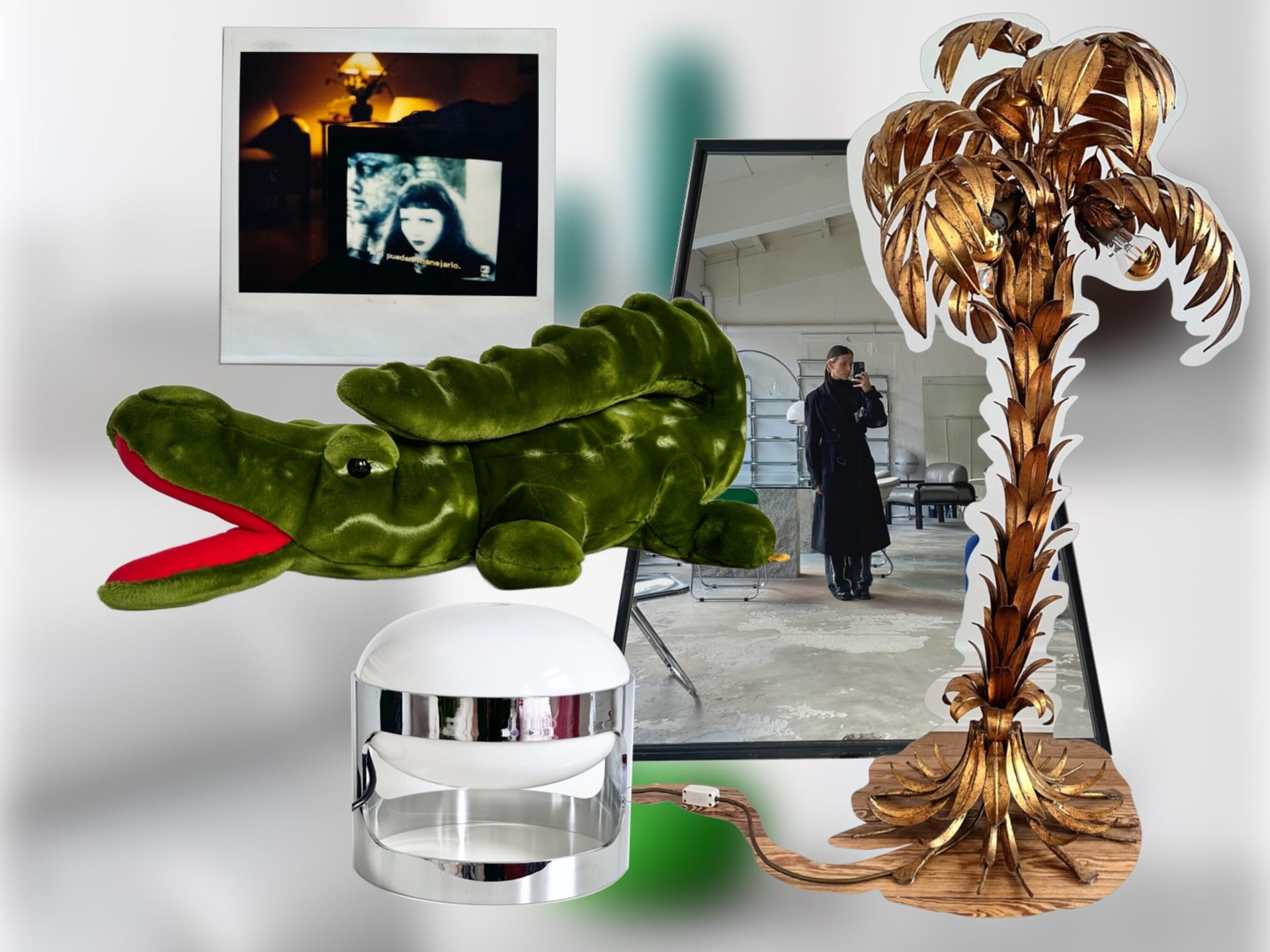The article you’re reading comes from our archive. Please keep in mind that it might not fully reflect current views or trends.

E-MERGING: Ain’t No Trash gives vintage furniture a new home
Founder Linda Käckermann talks about replicas, letting go and the story behind her five most treasured finds.
Text: Juule Kay
The world is changing, and with it, a new generation of trailblazers is taking over. In our monthly series E-MERGING, we introduce the people adding to the cultural moment with their creative minds, new ideas and unique approaches. It’s a glimpse behind the scenes, a way to dig deeper and look beyond the picture-perfect outcome we’re swamped with every day.
We’re all searching for something. Whether that’s love, a new flat or just another rare furniture piece. “I’ve been collecting vintage items out of pure joy rather than a business venture,” says Linda Käckermann, the interior nerd and founder of Ain’t No Trash. What started back during the first lockdown as a longing for an inspiring place–both online and offline–suddenly manifested into a solid idea in the form of a light-filled studio on the outskirts of Hamburg, Germany. Jam-packed with rare finds like a fiery version of Kartell’s modular shelving system and design icons like Plia chairs and Lipstick mirrors, Käckermann has always had a special connection to objects and a sense of curation.
“It’s all about how a piece makes me feel,” she explains her very intuitive way of sourcing rather than following trends. Ain’t No Trash resembles a gallery of mementos, showcasing everything from 70s retro furniture to modern space age and Bauhaus classics. “My curation is a feeling, not a consideration,” says Käckermann, who loves to mix and match depending on her mood. “I like the idea of confusing people, some see it as trash and others don’t.”
“I like the idea of confusing people, some see it as trash and others don’t”








Throughout the years, Käckermann built a large network of furniture nerds, enthusiasts and admirers, which often made the objects find her and not the other way around. Once she has sourced an item together with her girlfriend and partner, Lina Mackeprang, the real labour of love begins. “It’s so much work that goes into one single piece,” she explains the creative process behind it. After the transport is arranged and the market value is defined, they need to inspect the item, take photos and post them on Instagram and the website. “You only see the final pictures, but the work behind the scenes often gets underestimated,” she states, emphasising that all these steps are just for one single piece. In the end, you don’t only buy the item, but also the love and dedication the design fan puts into it.
With the furniture replica market booming, research is one of the most important parts of Käckermann’s creative process. “The internet is full of information you can’t always trust,” she says, mostly relying on browsing through old design books and catalogues. “Sometimes it’s the tiniest screw, the tiniest thing, that makes the difference.” Even if it might be tempting to give in–vintage furniture is an investment after all–the founder of Ain’t No Trash believes that consumption should always be sustainable and not based on trends.
For Käckermann, it’s about this very special bond with an object. An emotional process, which isn’t always easy, as she eventually has to let go. “Now I tried to separate the sourcing for the studio and our home because it can get emotional,” she admits, falling in love quite easily. “But sometimes there is no question that a piece has to come home with us.” In fact, Käckermann got better with it over time, as she sees the bigger picture. “I could probably write a book about all the anecdotes people tell me about objects,” she jokes. “That’s what I love about my job, passing on stories, not only items.”
Here, she talks about the memories connected to five of her most treasured finds.
It’s a collaboration between Steiff and Lacoste and used to be a decoration in some limited sports shops back in the late 80s, early 90s. I was in the mood for having a crocodile, just a funny little decoration thingy. And then, my girlfriend Lina found Fred in the South of Germany. He was too huge to be sent by post, so we booked him two seats in a private car. Now, he owns almost half of our sofa.
There’s really not a single week without someone asking me about this piece. It used to be the mirror in the changing room of the Alsterschwimmhalle in Hamburg. I bought it a few years ago at an auction and can’t stop thinking about how many people have looked in this mirror every day since.
I was sourcing for Ain’t No Trash and ended up in a huge kind of hall, where they used to engrave signs for space rockets. The place was packed with space age furniture in every corner. On one desk, I spotted the KD27 in a chrome version. The son who inherited the company simply gave it to me as a gift because he felt the connection I had with the lamp.
It’s an heirloom and means a lot to me. The lamp is from the 60s by Hans Kögl and covered with small pieces of gold. Sometimes, I really don’t know what I like about her, but it’s the memories that make it one of my favourite pieces.
A few years ago, we bought some old Polaroids at the flea market in Mallorca. A friend of the seller translated the conversation for us, and we ended up becoming friends and have spent a lot of time on the island since then. Every time he tells us more stories, as it turns out the photographer is super well known on the island. The Polaroids are now all over our apartment.
